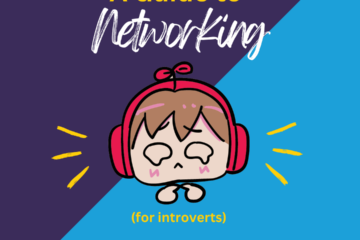Imagine this: you’re working in an entry-level position at a company and your shift is about to end. Before the clock strikes five, you’ve already risen from your seat, shut down your computer, and started shoving things into your backpack, counting down the final seconds until you can officially leave the office.
Suddenly, your boss pokes her head over the top of your cubicle. “I’m glad I caught you before you left,” she says, and from the frazzled look in her eyes, you already know what she’s about to ask. In a couple of days, your company is hosting an important event, and your colleagues have been scrambling night and day to put the final pieces together. “Can you stay after a bit to help us out?” she asks.
You check your watch. It’s 5:01. Just about now, you should be catching a train back to your apartment. “Sorry,” you tell her while shrugging on a jacket. “I have plans.” Plans that include snuggling underneath a pile of blankets and binge-watching your favorite TV show, but your boss doesn’t know that. Instead, she nods in understanding, and you take that opportunity to say your goodbyes and good lucks before slipping out the door.
In this scenario, whether unknowingly or not, you’ve just demonstrated an aspect of quiet quitting. Quiet quitting, despite what its name suggests, is not about the actual act of quitting; it’s about doing the bare minimum of your job’s requirements. Employees who quiet quit are defined as being less likely to work outside their official shift hours, attend non-mandatory meetings, respond to messages after their shift, or take on new responsibilities. Overall, quiet quitters are those who are no longer engaged in their work, failing to put in more time, effort, and enthusiasm than is absolutely necessary.
Although this concept of quiet quitting may not seem new, the actual term “quiet quitting” had only begun to pick up steam in March of 2022. Brain Creely, a Gen-X career coach and employment influencer, used the term quiet quitting to refer to employees who “coast” through work. The phrase has since become viral on TikTok, with many news organizations, such as Forbes, the New Yorker, and the Harvard Business Review, covering this phenomenon. Gallup, as well, ended up uncovering the exact scope of this trend. In an updated 2023 article, they found that 50% of the US workforce is made up of quiet quitters, with decreasing engagement rates being prominent amongst Gen-Z and younger millennials, especially during the second half of 2021.
So, what exactly is causing this phenomenon, where 80 million of the US workforce are considered quiet quitters? According to Gallup, declining engagement rates were found to be due to a number of factors: the lack of clarity of expectations, the absence of opportunities to learn and grow, the impression of not being valued within the company, and the disconnect with the organization’s mission. Julie Pollak, a chief economist at ZipRecruiter, however, theorizes in an NPR article that the prominence of quiet quitters may be attributed to an entirely different reason. She points to the correlation between quiet quitters and the record-low layoffs and firings as one of the reasons why disengagement and quiet quitting have been allowed to grow this much. People now have more job security than ever before, and because employees aren’t as fearful of being fired as they used to be, they aren’t incentivized to work harder. Why put in the extra work when you’re being paid the same and there aren’t consequences for coasting by?
Although the reasonings behind quiet quitting and its booming emergence aren’t exactly clear or attributable to one cause, the actual concept of quiet quitting has gotten mixed responses. While many paint quiet quitters as lazy workers detrimental to a company’s productivity, others claim that quiet quitting is just the act of setting boundaries and creating a healthier work-life balance. As this trend spirals into the popularity of “lazy girl jobs,” where job-seekers purposefully target positions that are low-stress and low-effort, however, it might not just be a discussion of whether quiet quitting is good or bad; it might be a discussion of changing workforce attitudes and how companies can adapt to them.
So, as you enter the workforce and find yourself showing signs of quiet quitting, ask yourself: are you setting boundaries for a good work-life balance or are you mentally checked out from your work? If you find yourself connecting to the latter, it may be time to move on and find another job you find rewarding, saving both you and your company trouble in the long run.


